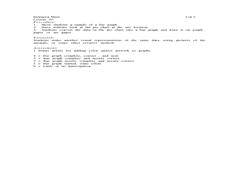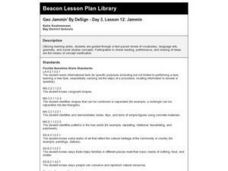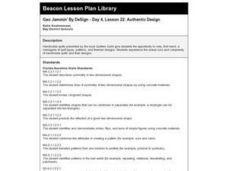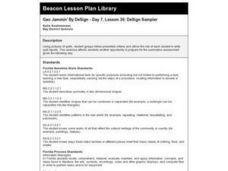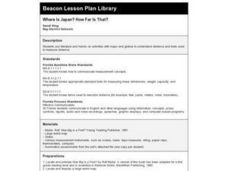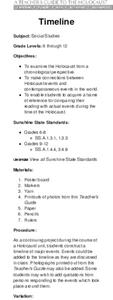Curated OER
Graph a Panther's Diet
Students examine the diet of panthers. In this interpreting data lesson, students collect data on the panther's diet and chart the data in bar and pie graphs.
Curated OER
Can You Find a Solution?
Students explore the topic of public conservation. In this Florida panthers lesson, students read a scenario about the endangered panther and collaborate to plan a way to protect the panther population. Students also participate in a...
Curated OER
Become an Expert
Students practice their researching techniques by preparing a presentation with little notice. In this information research lesson plan, students utilize the Internet to research one of several subtopics concerning panthers....
Curated OER
SAMMY DISCOVERS SHAPES AT SCHOOL
Pupils study maps and use them for real world experiences.
Curated OER
Geo Jammin' By DeSign - Day 3, Lesson 12: Jammin
Learners review definitions of word wall words using songs, movement and sharing.
Curated OER
Geo Jammin' By DeSign - Day 6, Lesson 32: Appliqué-tion of Learning
Second graders hand stitch three different appliqué stitches using triangles as a motif.
Curated OER
Geo Jammin' By DeSign - Day 2, Lesson 11: A Stitch in Time
Students investigate the culturally artistic value of quilts, the importance of trade in meeting basic needs, and the conservation of natural resources.
Curated OER
Geo Jammin' By DeSign - Day 4, Lesson 22: Authentic Design
Learners explore the complexity of handmade quilts and their designs by looking a real life samples.
Curated OER
Geo Jammin' By DeSign - Day 5, Lesson 28: The Mo-tea-if
Second graders explore tea dyeing cloth.
Curated OER
Flying Geese
Students examine the Flying Geese quilt pattern, and discuss and identify the pattern. They write a paragraph titled, My Quilt Report, summarizing the information discussed about the quilt patterns.
Curated OER
Geo Jammin' By DeSign - Day 7, Lesson 36: DeSign Sampler
Second graders, in groups, write quilt reports.
Curated OER
The Matrix
Second graders compare and contrast groups of Native Americans and culture groups from different regions and times.
Curated OER
Where Is Japan? How Far Is That?
First graders use literature and hands-on activities with maps and globes to explain distance and tools used to measure distance. They select tools to measure various objects in the classroom, then apply those concepts to their map...
Curated OER
Community Helpers Wheel
Students play a game to reinforce the understanding that some community helpers are producers of goods, and some provide a service. Students identify community helpers and their jobs.
Curated OER
A-maizing Facts
Learners research the lives of Native Americans living in the Northeast Woodlands region, focusing on how the climate, location, and physical surroundings affected their way of life.
Curated OER
Let's Celebrate!
Second graders, as a whole class, create a calendar of holidays using cards. Afterward, they add their birthdays to the calendar.
Curated OER
Käthe Kollwitz: Never Again War!
Students explore Kathe Kollowitz and other Holocaust artists.
Curated OER
The Fear of Exploration Because of... Sea Monsters
Eighth graders examine the underestimated cause as to why exploration into the western hemisphere was not common before the 1400's. They reconstruct the causes/effects of exploration to North America.
Curated OER
Holocaust Lesson Plan: Timeline
Students explore the chronology of the Holocaust, make connections between Holocaust events and contemporaneous world events and acquire a frame of reference for comparing their reading with actual events during the time of the Holocaust.
Curated OER
What's Down There
Third graders gather and examine samples from the school outdoor environment. They compare/contrast their samples with those of other students. Students record the results of their observations.
Curated OER
Timeline
Tenth graders examine the Holocaust from a chronological perspective. In this Holocaust lesson, 10th graders create parallel timelines on a poster about the Holocaust.
Curated OER
Creating Plants
Students create their own plants and write about them using digital cameras, AppleWorks, and the educational program Kid Pix. Emphasis is placed on the creative process and reflective writing.
